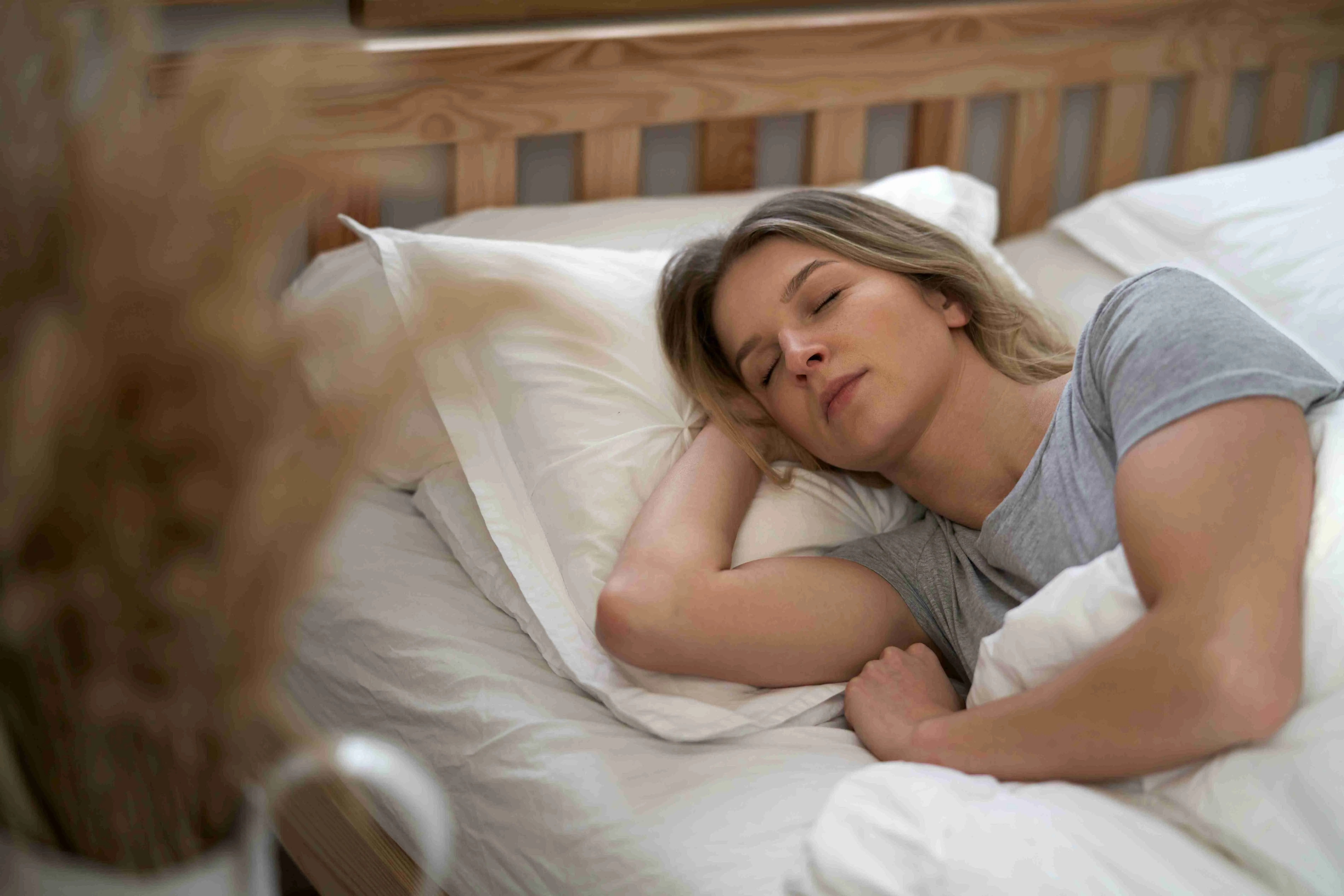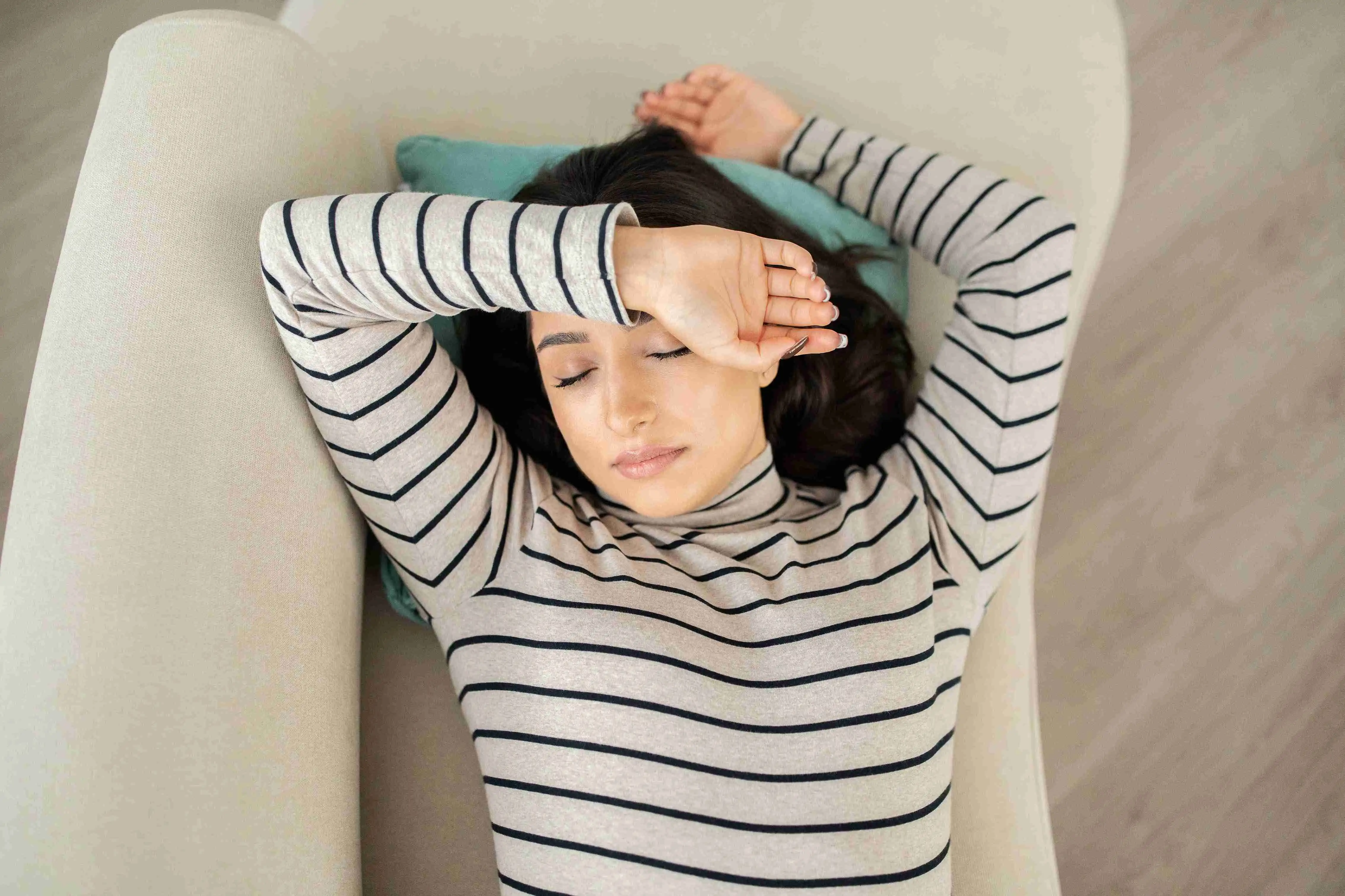Sleep restriction therapy (SRT) is a powerful, evidence-based treatment for insomnia that focuses on improving sleep quality by limiting the time spent in bed. Unlike medications that mask the symptoms of insomnia, SRT addresses the root causes of sleep disturbances by teaching you to spend more efficient, restful time in bed.
In this article, we will explore how SRT works, who can benefit from it, the principles behind the approach, and the steps involved in implementing this treatment effectively.
What is Sleep Restriction Therapy?
If you're someone who struggles with insomnia or poor sleep quality, you've likely explored various remedies and treatments to improve your rest.
SRT is a form of cognitive-behavioral therapy that focuses on modifying sleep habits and behaviors. It is based on the principle that spending excessive time in bed can lead to fragmented sleep and reinforce insomnia patterns. By temporarily limiting the time spent in bed to the actual amount of time you sleep, SRT helps to re-establish a consistent sleep-wake cycle.
How does sleep restriction therapy work?

SRT is grounded in the principles of sleep homeostasis and circadian rhythms. Sleep homeostasis refers to the body's natural drive to sleep, which builds up the longer you stay awake.
Circadian rhythms, on the other hand, are the internal biological clocks that regulate various physiological processes, including the sleep-wake cycle.
Principles of Sleep Restriction Therapy
- Limit Time in Bed: Initially, time spent in bed is reduced to match the actual amount of time spent sleeping, thus promoting more consolidated sleep.
- Increase Sleep Efficiency: By restricting time in bed, the goal is to increase the percentage of time asleep, making sleep more restorative.
- Regulate Sleep-Wake Cycle: SRT helps re-align the body’s natural circadian rhythms by establishing a consistent sleep schedule.
- Gradual Adjustment: The sleep window is gradually extended as sleep efficiency improves, allowing for longer sleep periods over time.
- Reduce Sleep-Related Anxiety: The therapy helps reduce the anxiety to sleep, which can often contribute to insomnia, by creating a predictable sleep pattern.
- Consistency is Key: Regularity in both sleep and wake times is central to reinforcing the new sleep habits and resetting the body’s internal clock.
Steps Involved in Sleep Restriction Therapy
- Step 1: Sleep Assessment: Begin by tracking your sleep patterns for 1–2 weeks, noting when you fall asleep, wake up, and any nighttime awakenings.
- Step 2: Set the Sleep Window: Based on your sleep efficiency (the amount of time you sleep versus the time spent in bed), the therapist or doctor will suggest a restricted sleep window (typically 4–6 hours).
- Step 3: Maintain Consistent Sleep and Wake Times: Go to bed and wake up at the same time every day, even on weekends, to reinforce your circadian rhythm.
- Step 4: Gradually Extend the Sleep Window: As your sleep efficiency improves, the time in bed is slowly increased by 15–30 minutes per week until you reach your ideal sleep duration.
- Step 5: Monitor Progress: Continue tracking your sleep and adjust the sleep window as needed to ensure sleep efficiency continues to improve.
- Step 6: Reevaluate and Maintain: Once sleep efficiency improves and a regular sleep pattern is established, gradually reduce restrictions, but maintain a consistent schedule to preserve long-term sleep improvements.
Effectiveness of Sleep Restriction Therapy
SRT has been shown to be an effective treatment for insomnia, as it helps consolidate sleep by limiting time spent in bed and gradually increasing sleep duration.
- Proven to Improve Sleep Efficiency: SRT significantly increases the percentage of time spent asleep versus awake in bed, leading to better-quality rest.
- Reduces Sleep Onset Latency: By limiting time spent awake in bed, SRT helps individuals fall asleep faster.
- Restores Natural Sleep Patterns: Helps re-align the body’s internal clock, improving both the duration and depth of sleep.
- Non-Pharmacological Approach: A natural treatment option for those looking to avoid or reduce reliance on sleep medications.
- Sustained Benefits: Many individuals experience lasting improvements in sleep even after completing the therapy, making it a long-term solution for insomnia.
Who can benefit from Sleep Restriction Therapy?
Many individuals suffering from chronic insomnia, particularly those with difficulty falling or staying asleep despite adequate sleep opportunities, can benefit from SRT.
- Individuals with Chronic Insomnia: Especially those who have difficulty falling asleep or staying asleep for extended periods.
- People Who Spend Too Much Time in Bed: SRT is beneficial for individuals who lie awake for hours at night or have irregular sleep-wake cycles.
- Those Who Have Developed Poor Sleep Habits: Includes people who associate the bed with wakefulness, anxiety, or other activities that interfere with sleep.
- Individuals Seeking a Non-Drug Solution: Those who prefer a natural, drug-free method of improving sleep quality and avoiding medication side effects.
- People with Sleep Anxiety: SRT can help reduce the stress and anxiety surrounding the inability to fall asleep by creating a more predictable sleep pattern.
- People Without Major Medical Conditions: SRT is most effective for individuals whose sleep issues are primarily behavioral rather than caused by underlying medical or psychiatric conditions.
Benefits of Sleep Restriction Therapy
Implementing SRT can offer numerous benefits for individuals struggling with insomnia or poor sleep quality. Here are some of the key advantages:
Improved Sleep Efficiency
SRT helps individuals improve sleep efficiency by reducing the time spent awake in bed. Limiting time in bed initially, encourages more consolidated sleep, allowing the body to adjust to a more consistent and effective sleep cycle. Over time, this improves the ratio of time spent asleep versus awake during the night.
Enhanced Sleep Quality
By focusing on maximizing the time spent in deep, restorative sleep, SRT helps individuals achieve higher-quality rest.
When people sleep only during periods of true sleepiness, they experience fewer disruptions and awakenings, which leads to more uninterrupted and restful sleep throughout the night.
Faster Sleep Onset
One of the immediate benefits of SRT is a reduction in the time it takes to fall asleep. As sleep efficiency improves, individuals often find that they fall asleep more quickly and easily, as the restriction of time in bed helps to reset the body's natural sleep-wake rhythms.
Enhanced Bed-Sleep Association
SRT helps reinforce the bed as a place strictly for sleep, which strengthens the mental association between the bedroom and rest.
This reduces the habit of tossing and turning or engaging in other activities (like watching TV or using phones) in bed, which can otherwise interfere with the sleep process.
Reduction in Sleep Anxiety
For many individuals with insomnia, sleep anxiety exacerbates the problem. SRT addresses this by helping people experience more predictable sleep patterns, which can reduce the mental pressure surrounding the idea of “trying” to sleep.
Non-Pharmacological Approach
SRT is a non-medical treatment that does not rely on the use of sleep medications. This is a significant advantage for people who are wary of the side effects or long-term dependency that can come with pharmaceutical sleep aids. SRT offers a natural, drug-free method of improving sleep.
Greater Control Over Sleep Patterns
With SRT, individuals regain control over their sleep-wake cycles by establishing a consistent sleep routine.
By carefully managing the amount of time spent in bed and adjusting based on progress, people can develop healthier sleep patterns that work in harmony with their natural circadian rhythms.
Scalable and Customizable
SRT is a flexible treatment that can be tailored to an individual's specific needs. The duration and timing of sleep restriction can be adjusted as progress is made, allowing for a gradual and sustainable improvement in sleep. This adaptability makes it a suitable option for a wide range of individuals.
Increased Daytime Alertness
As the quality of nighttime sleep improves through SRT, individuals often experience greater daytime alertness.
More restful sleep leads to better cognitive function, mood, and energy levels during the day, reducing the fatigue and lethargy that often accompanies chronic insomnia.
Improved Mood and Well-being
Consistently better sleep through SRT not only enhances physical health but also contributes to improved emotional well-being.
Better sleep helps regulate mood, reduce irritability, and increase resilience to stress, leading to an overall improvement in mental health and quality of life.
Challenges and Solutions in Sleep Restriction Therapy

While SRT can be highly effective, it's not without its challenges. Here are some common obstacles you may encounter and potential solutions:
Initial Sleep Deprivation
The initial phase of SRT may involve some sleep deprivation, which can lead to daytime fatigue and irritability. To combat this, prioritize rest during the day, avoid operating heavy machinery, and consider taking naps (but not too close to your designated sleep window).
Difficulty Adhering to the Sleep Window
Sticking to a strict sleep-wake schedule can be challenging, especially on weekends or during social events. Develop strategies to maintain consistency, such as setting reminders or involving family and friends in your sleep routine.
Struggles with Consistent Wake Time
Maintaining a consistent wake time can be difficult, particularly when sleep quality improves or when you're tempted to sleep in after a poor night’s rest. However, it’s essential to wake up at the same time each day to help regulate your body’s internal clock.
To overcome this challenge, use an alarm clock, avoid "snoozing," and try placing your phone or alarm across the room to force yourself out of bed.
Relapse During Stressful Periods
Stressful events, such as work shifts, family issues, or mental health concerns, can disrupt the progress made with SRT and lead to sleep difficulties resurfacing.
During stressful times, focus on practicing relaxation techniques, such as deep breathing, mindfulness, or meditation, to manage anxiety and promote sleep.
Difficulty Cutting Back on Naps
Napping during the day can undermine the effectiveness of SRT by making it harder to consolidate sleep at night. To tackle this, aim to avoid naps or keep them very brief (15-20 minutes) earlier in the day.
If you find it hard to resist napping, try engaging in a quiet, relaxing activity instead, like reading or light stretching, which can help reduce daytime sleepiness without interfering with nighttime sleep.
Anxiety or Worry About Sleep
Some individuals may experience increased anxiety or worry about not getting enough sleep, which can further exacerbate insomnia. Practice relaxation techniques, such as deep breathing or mindfulness exercises, to manage these feelings.
Lack of Improvement
In some cases, SRT may not produce the desired results immediately. If you're not seeing improvements after several weeks, consult with your therapist or sleep specialist to explore alternative or complementary treatments.
Sleep Restriction Therapy vs. Other Sleep Treatments

While SRT has proven to be an effective approach for managing insomnia, it's important to understand how it compares to other sleep treatments:
- Cognitive-Behavioral Therapy for Insomnia (CBT-I): SRT is a component of CBT-I, which is a comprehensive treatment program that also addresses cognitive factors and sleep-related behaviors. CBT-I may be recommended for individuals who require a more comprehensive approach.
- Sleep Medications: Unlike sleep medications, which can have side effects and the potential for dependence, SRT is a non-pharmacological treatment that aims to address the underlying causes of insomnia.
- Light Therapy: Light therapy is sometimes used to help reset the body's circadian rhythms, particularly in cases of circadian rhythm disorders. While it can be effective, it may not address other factors contributing to insomnia, such as poor sleep habits or cognitive distortions.
- Relaxation Techniques: Relaxation techniques, such as progressive muscle relaxation or mindfulness meditation, can be beneficial for reducing anxiety and promoting better sleep. However, they may not be as effective as SRT in addressing the underlying sleep homeostasis and circadian rhythm issues.
FAQs
Is sleep restriction therapy safe?
SRT is generally considered safe when implemented under the guidance of a qualified healthcare professional or sleep specialist. However, it's important to follow the prescribed sleep window and avoid excessive sleep deprivation, which can have negative impacts on health and well-being.
How long does it take to see results with sleep restriction therapy?
The time it takes to see significant improvements in sleep quality can vary from individual to individual. Some people may notice positive changes within a few weeks, while others may require several months of consistent implementation. Patience and adherence to the therapy are crucial for achieving success.
Can sleep restriction therapy be used for children or adolescents?
While sleep restriction for insomnia is primarily studied and implemented in adults, it can be adapted for use in children and adolescents under the supervision of a qualified pediatric sleep specialist or psychologist. The therapy may need to be modified to account for developmental stages and specific sleep needs.
Can sleep restriction therapy be combined with other treatments?
Yes, sleep therapy can be used in conjunction with other treatments, such as cognitive-behavioral therapy, relaxation techniques, or light therapy, depending on the individual's specific needs and circumstances. Your healthcare provider or sleep specialist can provide guidance on the most appropriate combination of treatments.
Is sleep restriction therapy suitable for shift workers or those with irregular sleep schedules?
SRT can be more challenging for individuals with irregular sleep schedules, such as shift workers or those with circadian rhythm disorders. In these cases, the therapy may need to be modified or combined with other approaches, such as light therapy or chronotherapy, to better align with the individual's sleep-wake cycle.
Conclusion
Sleep Restriction Therapy offers a practical and long-lasting solution for individuals struggling with insomnia, especially those looking for a non-pharmacological approach to improving sleep. While the initial phase can be challenging, the long-term benefits are well worth the effort.
Karen Barnard
Karen is a Human Movement Science expert and a certified sports nutrition and massage therapist. At Sleepiverse, she combines her passion for human movement science and sleep health to educate herself and her readers about healthier sleep. In addition to writing articles, Karen manages a fitness studio offering private training, athletic conditioning, and sports massage therapy. She focuses on providing people with a holistic environment for people to reach their health goals, often incorporating stretch therapy to promote mental tranquillity and help people improve their sleep.


